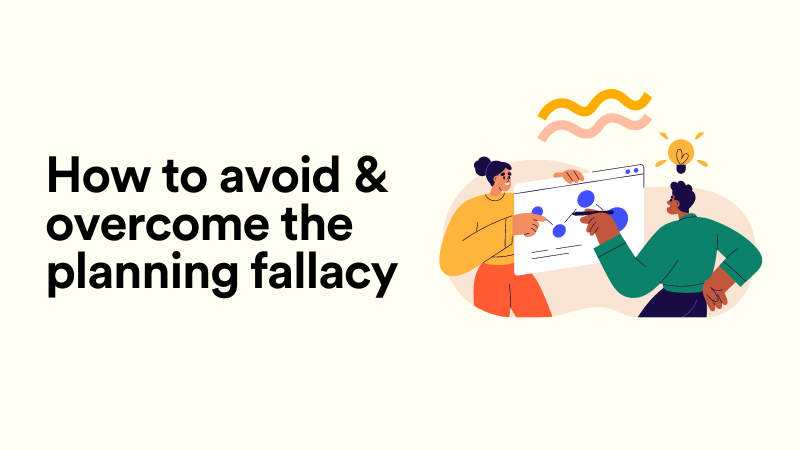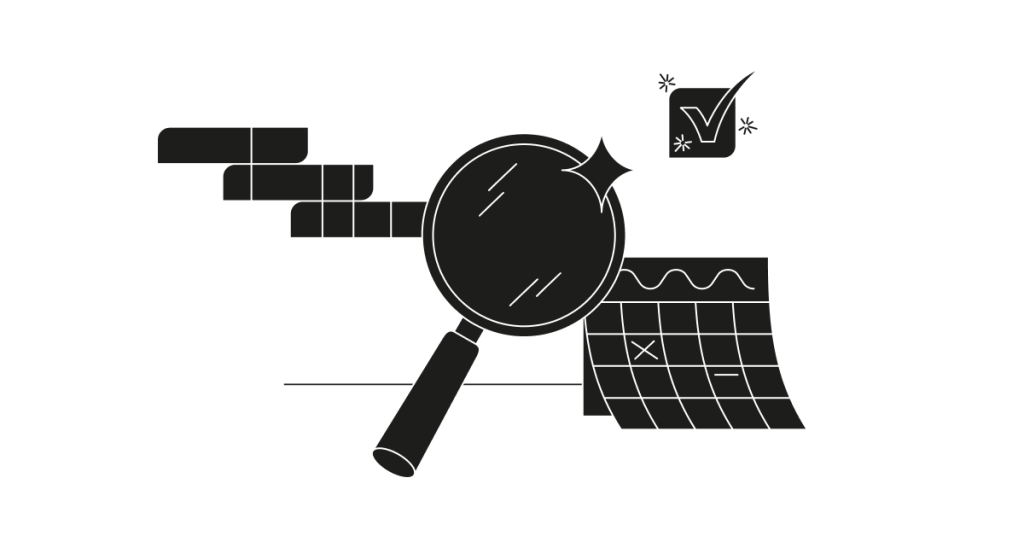Project forecasting plays a crucial role in project management. It’s all about predicting future project outcomes—like how long tasks will take, how much the project will cost, and what resources you’ll need to stay on track. By looking at current data and past experiences, teams can make smart decisions and avoid surprises down the road.
In today’s fast-moving work environment, projects often face unexpected changes. With proper forecasting, project managers can prepare ahead of time, adjust plans when needed, and keep everything moving forward smoothly. Whether you’re managing a small team or a large operation, forecasting helps you stay in control.
In this blog, we’ll dive into what project forecasting really means, why it’s important, and how it can be used in real-world scenarios. We’ll also share 10 practical tips to help your team improve forecasting and stay on top of every project.
What is Project Forecasting?
Project forecasting is the process of using current data, historical trends, and performance insights to predict how a project will progress in the future. It helps project managers estimate critical elements such as project duration, overall costs, and quality outcomes. The main goal is to identify potential risks or delays before they happen—so teams can take preventive steps and make better decisions during the project lifecycle.
Forecasting is not a one-time task. It’s an ongoing practice that project managers use to monitor progress and adjust plans as needed. Accurate forecasting can help set realistic expectations for stakeholders, improve resource planning, and ensure that projects meet their objectives on time and within budget.
Let’s take a closer look at the three key components most commonly forecasted in project management:
Duration
Forecasting the duration of a project means estimating how long each task or phase will take and when the project is likely to be completed. This includes factoring in potential delays, dependencies between tasks, and the availability of team members or resources.
By using forecasting tools and project scheduling techniques like Gantt charts or the Critical Path Method (CPM), project managers can create realistic timelines. Regular updates to the forecast help identify if the project is ahead of schedule or at risk of running late.
Project Cost
Another key element of forecasting is predicting project costs. This involves estimating the total budget required to complete the project, including labor, materials, tools, overhead, and any other expenses. Cost forecasting helps organizations avoid overspending and manage financial risk.
Project managers use historical data from similar projects, vendor quotes, and actual costs to adjust forecasts as the project progresses. Keeping a close eye on financial forecasts ensures that the project stays within the approved budget and helps maintain profitability.
Quality
Forecasting project quality is about predicting whether the project will meet the defined standards and expectations. This includes evaluating the quality of deliverables, processes, and team performance over time.
By reviewing key performance indicators (KPIs), client feedback, testing results, and quality audits, managers can forecast potential quality issues. Taking early corrective actions based on these forecasts helps maintain high standards and keeps stakeholders satisfied.
Effective forecasting in these three areas—duration, cost, and quality—lays the foundation for strong project planning and successful delivery. It gives project teams the confidence to move forward while staying agile and responsive to change.

Importance of Project Forecasting in Project Management
Project forecasting is more than just a prediction—it’s a strategic tool that helps project managers take control of their projects before issues arise. It allows teams to look ahead, stay prepared, and make smart decisions backed by data. In project management, where timing, resources, and stakeholder expectations are always at play, forecasting becomes essential to success.
Here are some key reasons why project forecasting is so important:
1. Helps Manage Uncertainty
Every project involves a level of risk and uncertainty. Forecasting helps identify potential challenges—like delays, resource shortages, or cost overruns—before they happen. By preparing in advance, project managers can reduce surprises and create contingency plans to handle unexpected changes.
2. Improves Resource Allocation
With accurate forecasting, teams can better plan how to use their time, tools, and people. You’ll know when certain resources will be needed and for how long. This ensures that resources are not overbooked or underutilized, leading to smoother workflows and better performance.
3. Enhances Budget Control
Cost forecasting plays a huge role in keeping a project financially healthy. It gives a clear view of what the project will cost at every stage and helps managers spot early signs of overspending. This means you can adjust the budget or reduce unnecessary expenses before it’s too late.
4. Keeps the Project on Schedule
Time forecasting helps identify delays early, giving teams the chance to speed things up or adjust timelines accordingly. With ongoing updates, teams can stay aligned with deadlines and avoid last-minute rushes that may affect quality or team morale.
5. Builds Stakeholder Confidence
When project managers provide accurate forecasts, stakeholders gain trust in the project’s direction. Clear forecasts give stakeholders a realistic view of what to expect and when. This transparency reduces conflicts and helps secure continued support throughout the project.
6. Improves Decision-Making
Good forecasting equips managers with the data they need to make informed decisions. Instead of reacting to problems, teams can proactively steer the project in the right direction. This leads to better planning, smarter investments, and greater overall success.
Project forecasting is a powerful way to reduce risk, improve performance, and deliver projects with confidence. Whether it’s estimating time, budget, or resources, forecasting provides the clarity and control every project team needs to succeed.

Example of Project Management Forecasting in Practice
Understanding how project forecasting works in theory is helpful—but seeing it in action brings it to life. Let’s walk through a practical example of how forecasting can be applied to a real-world project and how you can build your own forecast plan.
Scenario: Launching a New Marketing Website
Imagine a digital agency is tasked with launching a new marketing website for a client. The project involves multiple phases—planning, design, development, testing, and launch. Here’s how forecasting would be used throughout the project:
Forecasting Duration
The project manager estimates that the entire project will take 10 weeks. Each phase is broken down with predicted timelines—e.g., design takes 2 weeks, development takes 4 weeks, and testing takes 1 week. These estimates are based on previous similar projects.Forecasting Cost
Using current hourly rates and expected resource usage, the project manager forecasts a total cost of $30,000. They factor in time for revisions, possible delays, and additional expenses like software tools or image licensing.Forecasting Resources
The team schedules the involvement of specific roles—designers, developers, content writers, and QA testers—based on availability. They forecast when each team member will be needed and for how long.Forecasting Quality
Quality benchmarks are set using KPIs like load speed, mobile responsiveness, and client feedback scores. If testing results or design reviews show issues, adjustments are made early in the process.Ongoing Forecast Adjustments
Halfway through the project, development is delayed due to a client-side approval bottleneck. The project manager adjusts the timeline and reallocates resources. The forecast is updated and shared with the team and stakeholders to align expectations.
Building Your Forecast Plan
Creating an effective forecast plan involves a mix of data analysis, team input, and regular reviews. Here’s a simple step-by-step process you can follow:
Define Project Goals
Start by setting clear objectives—what needs to be delivered, by when, and within what budget?Break Down the Work
Use work breakdown structures (WBS) to divide the project into tasks and milestones.Collect Historical Data
Look at similar past projects to understand timelines, costs, and resource needs.Use Forecasting Tools
Leverage project management software that includes forecasting features to track progress and predict outcomes.Involve Your Team
Collaborate with team members to create realistic estimates for time and effort. Their input adds accuracy to your forecasts.Set Key Metrics
Establish metrics to monitor performance—time spent, budget used, tasks completed, etc.Update Regularly
Review and adjust your forecasts regularly. Project conditions change, so your forecast should too.
With a solid forecast plan in place, your project will be better equipped to handle challenges, stay aligned with goals, and deliver strong results.

10 of the Best Project Forecasting Tips for Project Teams
Effective project forecasting can be the difference between a successful project and one that misses deadlines or goes over budget. These tips will help you sharpen your forecasting approach, improve accuracy, and stay in control throughout the project lifecycle.
1. Set Project Goals
Before you begin forecasting, you need to clearly define what success looks like for your project. This includes outlining the project scope, timeline, budget, and expected deliverables. When goals are well-defined, it becomes much easier to create realistic forecasts that align with those goals.
Project goals serve as a foundation for all your forecasts. For example, if your goal is to launch a new product in six months with a budget of $100,000, your forecast must support that timeline and financial constraint. Without clear goals, your predictions could be vague, unfocused, and ultimately ineffective.
Take the time to involve stakeholders, align expectations, and document all goals before starting the forecasting process. This creates a shared vision and helps the team stay focused on what truly matters.
2. Review Historical Data
Historical project data is one of the most valuable resources when forecasting. Past performance often reveals trends, bottlenecks, or areas where things typically go off track. By reviewing data from previous similar projects—such as task durations, budget usage, and team performance—you gain insights that make your future forecasts more accurate.
For instance, if a certain phase of the project consistently takes longer than planned or if a specific vendor often causes delays, you can build those patterns into your forecast. Historical data also helps identify how resource availability or seasonal workloads might impact your timeline.
Don’t overlook lessons learned documents, previous Gantt charts, timesheets, and financial reports. These records provide context, reduce guesswork, and add credibility to your forecasting process.
3. Create Multiple Predictions
Relying on a single forecast can be risky. Even the most carefully planned projects can face unexpected issues—like team changes, supplier delays, or shifting client requirements. That’s why it’s smart to create multiple forecasting scenarios, including:
Best-case scenario – Everything goes as planned or even better.
Most likely scenario – Based on current data and team performance trends.
Worst-case scenario – Accounts for possible risks or delays.
By developing these alternative predictions, you prepare your team for a range of outcomes. It also makes it easier to make adjustments if something doesn’t go according to plan. This flexibility is especially helpful during risk assessments and when communicating with stakeholders who want to understand different possibilities.
Scenario forecasting allows for better resource allocation, smarter budgeting, and greater resilience in the face of change.
4. Track Your Time
Time tracking is essential for accurate project forecasting. If you don’t know how long tasks are actually taking, you can’t make realistic predictions for the future. By logging time consistently—across all phases and team members—you’ll start building a rich dataset that reveals how work really flows in your projects.
Use time-tracking tools or built-in features in your project management software to monitor hours spent on each task. This helps you spot patterns, compare estimated vs. actual durations, and adjust future forecasts accordingly.
For example, if your team consistently takes 20% longer than expected on design tasks, you can factor that into upcoming project schedules. Over time, this practice leads to tighter planning, fewer surprises, and better use of your team’s availability.
5. Allow Time for Tasks to Overrun
Even with the best planning, some tasks will take longer than expected. That’s why it’s important to build in buffer time during the forecasting stage. Adding a margin for potential overruns helps protect your schedule and reduces the chances of falling behind.
This doesn’t mean padding every task with unnecessary time. Instead, focus on areas that are more complex or prone to delays—such as client approvals, custom development work, or dependencies on external vendors.
For instance, if a task is estimated to take 5 days, you might forecast 6 or 6.5 days to allow for revisions or feedback. This gives you breathing room without derailing the whole project when things don’t go perfectly. Forecasting with built-in flexibility is a smart way to stay realistic while maintaining control.
6. Become an Expert at Resource Management
Project forecasting isn’t just about time and money—it’s also about people and tools. Knowing how to allocate, balance, and optimize resources is key to keeping your forecasts accurate and your team productive.
Start by understanding your team’s strengths, weaknesses, and availability. Avoid overloading high-performing individuals or assigning critical tasks to someone who’s already at capacity. Match resources to tasks based on skill, priority, and complexity.
Forecasting also means anticipating resource needs in the future. Will you need extra support in a certain phase? Are vacations or other projects going to affect your team’s availability? Use forecasting to plan ahead and fill gaps before they become bottlenecks.
Good resource management not only improves efficiency but also boosts morale and ensures a smoother project delivery. The more effectively you manage your team, the more reliable your forecasts will become.
7. Revisit Your Early Project Forecasts
Forecasting isn’t something you do once and forget. As your project progresses, conditions change—tasks shift, priorities evolve, and unexpected roadblocks can appear. That’s why it’s important to regularly revisit your early project forecasts.
Compare your current progress with your initial estimates. Are you on track? Are some areas falling behind or costing more than expected? Use this insight to adjust your future projections and avoid repeating the same mistakes.
By reviewing early forecasts, you also improve future planning. You learn where your assumptions were accurate and where they were off, helping you refine your forecasting skills over time. Regular check-ins make your forecasts a living, evolving guide—not just a static document.
8. Share Your Project Forecast With Others
Forecasting is most effective when everyone involved is on the same page. Share your forecast with team members, stakeholders, and clients to build transparency and align expectations.
When people understand the project’s direction, they can plan their own tasks more efficiently. For example, if a developer knows when their work is forecasted to begin, they can prepare in advance. Likewise, clients who see realistic timelines and cost estimates are more likely to trust the process and remain engaged.
Open communication also invites feedback, which can improve forecast accuracy. A team member might spot a flaw in the schedule, or a stakeholder may provide insight that changes a budget assumption. Forecasting works best when it’s collaborative.
9. Use Project Forecasting Tools
Manual forecasting is prone to errors, especially in large or complex projects. That’s where project forecasting tools come in. These tools help you automate predictions, track real-time progress, and quickly spot trends or risks.
Look for project management platforms that offer features like time tracking, cost analysis, resource allocation, and forecasting dashboards. Tools such as Microsoft Project, Smartsheet, Forecast, and Corexta (if you’re using it) can significantly improve accuracy and efficiency.
The right tool can help you:
Visualize progress vs. plan
Create multiple forecast scenarios
Generate reports for stakeholders
Adjust forecasts based on live data
Investing in forecasting tools not only saves time but also boosts your confidence in the data you rely on.
10. Evaluate the Accuracy of Your Forecasts
The final step in strong project forecasting is measuring how accurate your forecasts were. Once a project is complete—or even at major milestones—review your predictions against actual outcomes.
Did tasks take longer than expected?
Were you over or under budget?
Were resources used as planned?
Answering these questions gives you insights into where your forecasting process was strong and where it needs improvement. It helps you fine-tune your estimates in future projects, making your forecasts more dependable over time.
Consider creating a post-project report that includes forecast vs. actual comparisons. This evaluation builds forecasting maturity and helps your entire team grow more confident in future planning.
Enhance Your Project’s Success with Effective Project Forecasting
Precise project forecasts help your team perform efficiently without added stress, while keeping clients and stakeholders informed about what to expect during the project timeline. By applying the tips shared above, you can refine your forecasting approach to provide accurate, data-driven, and strategic predictions for upcoming projects.
If you want a solution that not only simplifies project forecasting but also streamlines your overall project management, try Corexta for free. Our platform delivers a powerful mix of tools for managing projects, tasks, and resources—all designed to help your team succeed. ✨










